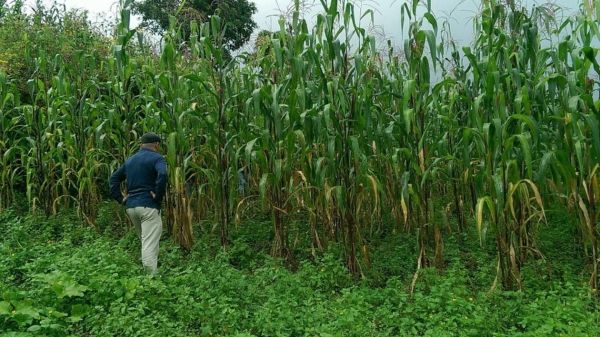In a 1979 visit to Totontepec, a small town in Oaxaca, Mexico, naturalist Thomas Boone Hallberg marveled at the local maize. The plants grew nearly 20 feet high in nutrient-poor soil, even though local farmers did not apply any fertilizer.
The maize had aerial roots that grew a mucous-like gel just before harvest season. It seemed impossible, but Hallberg wondered if the maize was fixing its own nitrogen: extracting it from the air and somehow making it usable for the plant. He had visited countless towns since moving to Oaxaca in the 1950s, but what he saw in Totontepec stuck with him.
In 1992, Hallberg returned with a group of Mexican scientists. The maize, known as olotón, was almost ready for harvest and its aerial roots glistened with gel. Ronald Ferrera-Cerrato, a microbiologist, took samples back to his lab outside Mexico City to test the bacteria in the gel. His preliminary results, published in a 1996 report, showed that the maize received nitrogen from the air, through its aerial roots, meaning that it effectively had the ability to fertilize itself.
At the time, scientists around the world were puzzling over similar questions. In a 1996 paper in Plant and Soil, microbiologist Eric Triplett, then at the University of Wisconsin, described the possibility of corn plants that fix nitrogen as “the ‘holy grail’ of nitrogen fixation research” because of the potential to reduce fertilizer demand.
Read more at: Yale Environment 360
A Mexican scientist inspects a field of olotón maize near Oaxaca, Mexico. (Photo Credit: ALLEN VAN DEYNZE/UC DAVIS)


